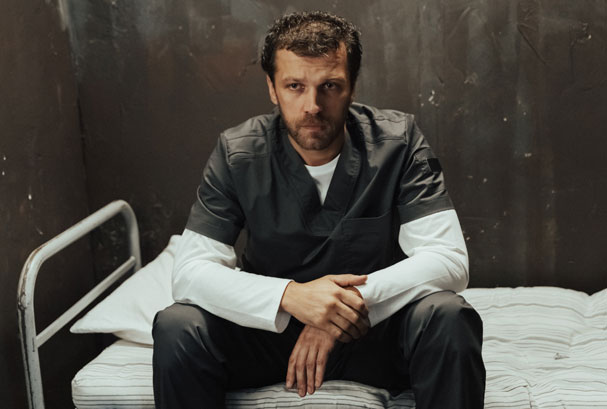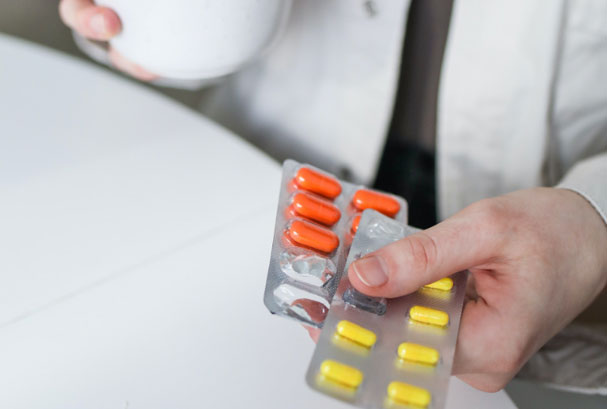The Project New Day goal is to establish a healing model that leads to profound, transformative experiences and sustained positive changes, thereby reducing or eliminating the need for medication-assisted treatment, a lifetime of antidepressants, and their emotional and physical side effects.
“Addiction is not a choice that anybody makes; it’s not a moral failure; it’s not an ethical lapse; it’s not a weakness of character; it’s not a failure of will, which is how our society depicts addiction. Nor is it an inherited brain disease, which is how our medical tendency is to see it. What it actually is: it’s a response to human suffering.”

Addiction is a complex trait influenced by variations in multiple genes as well as environmental factors. Each individual inherits a distinct combination of gene variations, meaning that people with substance use disorders may have different genetic causes. However, individuals who share certain high-risk gene variations may or may not exhibit the trait. Through careful investigations, scientists have estimated that genetics contribute to approximately 50 percent of a person’s risk for addiction, as described in this meta-analysis: “The Heritability of Alcohol Use Disorders: A Meta-Analysis of Twin and Adoption Studies“. However, this estimate may be inaccurate. Twin studies are notoriously unreliable, (“Twin Studies: A Unique Epidemiological Tool“) with a host of limitations including,
For the purpose of healing, Project New Day believes that overcoming addiction is always attainable, regardless of genetic predisposition and external circumstances. That is to say, the Project New Day approach is to focus on what we can change.
Some environmental factors may be extremely difficult to modify such as social and racial inequality or even employment status or neighborhood characteristics. Other factors are more in one’s everyday control, such as peer influence and personal choice. Ultimately, the Project New Day addiction philosophy aligns with Gabor Maté’s position: “It’s not why the addiction? It’s why the pain? And the answer is always rooted in childhood trauma.” Certainly, genetic and external factors come into play, but how one responds to these factors is about foundational emotional health.
Simply put, the Project New Day Program Model aspires not just to address addictive behaviors, but more importantly, to address the loss of connections with oneself and others that underlie the behaviors.
Our brains are designed for survival. To support survival, we have reward systems that give us a feeling of pleasure and motivation when we work toward and obtain the things that we need to survive, such as food, sex, and social connections. Social connections are important for survival because they bind communities – and communities survive better than individuals.
Additionally, the combination of pleasure and motivation gives us a feeling of well-being and supports our ability to deal with life’s challenges.
“The first question is not why the addiction; it’s why the pain? And from my perspective, it’s always rooted in childhood trauma, either overt or covert.” “Recovery can take place only within the context of relationships. It cannot occur in isolation.”
It is extremely important to understand that social connections include the relationship we have with ourselves. With few exceptions, this particular connection is more important to mental health and sense of well-being than our relationships with others or the environment.
When one feels disconnected and has little or no sense of well-being, the inclination is to turn toward short-term mood repair, even though it means sacrificing future objectives: “I’ll just have this one bowl of ice cream and begin my diet tomorrow!” or “I probably shouldn’t, but I’ll have just one more drink before I head back home!”
Having a bowl of ice cream or an alcoholic drink is not an example of addiction unless the consumption is in some way problematic. Addiction specialist Gabor Maté defines addiction as,
“Any behavior that gives you temporary relief, temporary pleasure, but in the long term causes harm, has some negative consequences and you can’t give it up, despite those negative consequences.”
Behaviors that are addictive stimulate specific brain receptors to produce euphoria and/or relaxation. Opioids, for example, deliver a reward that’s much more powerful than the brain’s “natural” rewards. After repeated use, the substance rewards begin to overpower the natural rewards, leading the addict to seek the drug over anything else.
But substance abuse is just one type of behavioral addiction. Others include gambling, gaming, workaholism, obsessive focus on hobbies, and compulsive eating, to name a few.
So, what can we do? How can we decrease our proclivity toward addictions? How can we increase our flexibility in responding to life’s challenges? How do we reconnect to ourselves, others, and our environment?
Western civilization has historically struggled to understand addiction as a complex medical condition and has often viewed it as a moral failing or personal weakness. This stigmatization has led to inadequate support and resources for individuals struggling with addiction, perpetuating a cycle of shame and isolation.[7] Traditional approaches to addiction treatment, such as abstinence-based programs and 12-step programs, have only limited success rates.[8] In addition, Western civilization has tended to view addiction as a criminal justice issue, rather than a public health issue. This approach has led to punitive measures such as incarceration, which may exacerbate the underlying issues that contribute to addiction, including trauma and social inequality.[9]

Research shows that alcohol and opioids have the highest rates of relapse, with some studies indicating a relapse rate for alcohol as high as 80 percent during the first year after treatment. Similarly, some studies suggest a relapse rate for opioids as high as 80 to 95 percent during the first year after treatment.
However, the National Institute on Drug Abuse (NIDA)[10] sees addiction as a chronic disease that can be managed successfully with long-term treatment, and the likelihood of relapse can be reduced through sustained recovery efforts. Studies have shown that individuals who remain in treatment for longer periods have better outcomes, and those who participate in aftercare programs or support groups are more likely to maintain their recovery. One study published in the Journal of Addiction Medicine[11] found that among opioid-dependent patients receiving medication-assisted treatment (MAT), the rate of sustained recovery (defined as no opioid use for at least 5 years) was 46.6 percent, although it’s important to note that this study only included patients who were receiving MAT and that recovery rates can vary widely depending on the type of treatment and the individual’s specific circumstances.
MAT stands for Medication-Assisted Treatment, which is an evidence-based treatment approach that combines the use of medications with counseling and behavioral therapies to treat substance use disorders, including opioid addiction. The medications used in MAT help to normalize brain chemistry, reduce cravings, and block the euphoric effects of opioids, which helps individuals manage their addiction, avoid relapse, and improve their quality of life. The medications used in MAT for opioid addiction include:


MAT may have different side effects depending on the specific medication used. Methadone can cause side effects such as drowsiness, dizziness, nausea, vomiting, sweating, constipation, dry mouth, and difficulty urinating. It can also cause more serious side effects like slowed breathing, low blood pressure, and decreased heart rate. Buprenorphine can cause side effects such as headache, nausea, vomiting, constipation, stomach pain, and muscle aches. It can also cause more serious side effects like allergic reactions, difficulty breathing, and liver damage. Naltrexone can cause side effects such as nausea, vomiting, diarrhea, headache, dizziness, and decreased appetite. It can also cause more serious side effects like liver damage and allergic reactions. It’s important to note that not everyone will experience side effects from MAT and that the benefits of treatment often outweigh the potential risks. It’s also important for patients to work closely with a healthcare provider to monitor for any potential side effects and adjust treatment as needed.
SAMHSA’s working definition of recovery defines recovery as a process of change through which individuals improve their health and wellness, live self-directed lives, and strive to reach their full potential. Today, when individuals with mental and/or substance use disorders seek help, they are met with the knowledge and belief that anyone can recover and/or manage their conditions successfully. The value of recovery and recovery-oriented systems of care is widely accepted by states, communities, healthcare providers, peers, families, researchers, and advocates including the U.S. Surgeon General, the National Academy of Medicine (NAM), and others.
The SAMHSA Guiding Principles, which include the belief that challenges and conditions can be overcome with personal strengths, talents, coping abilities, resources, and inherent values, are the foundation of a successful recovery.
The SAMHSA “Four Major Dimensions of Recovery” are:
These “Dimensions” are in line with the Project New Day approach to healing addiction. Furthermore, The SAMHSA recovery model is generally believed to be an improvement over the abstinence-based models and incarceration. However, the improvements that have been seen often go hand-in-hand with ongoing Medication-Assisted Treatment (methadone, buprenorphine, and naltrexone) and require the long-term use of antidepressant medicines.
Based on statistics from the Centers for Disease Control and Prevention (chart at the top of this page), the approaches our society is currently taking to address addiction are not solving the opioid problem.
Should we continue to do the same things and expect different results (insanity)? Or open up our minds and decide to change a losing game?
“Insanity is doing the same thing over and over and expecting different results.”
Project New Day believes addiction largely originates from emotional distress, which is caused by factors such as familial trauma, poverty, and social inequality. In this context, “trauma” denotes the emotional reaction to a distressing event or circumstance that overwhelms an individual’s coping capacity. It is this emotional reaction, or pain, that ultimately results in the breakdown of connections with oneself, others, and the surrounding environment. Addiction, then, is just a solution to a problem. In his book on Internal Family Systems, “No Bad Parts,” Richard Schwartz says:
The Project New Day healing philosophy focuses on helping participants reestablish connections and discover new possibilities in these ways:
Essentially, the goal is to provide a model that leads to profound, transformative experiences and sustained positive changes without the need for medication-assisted treatment and a lifetime of antidepressants, which have emotional and physical side effects. It is a model that aims to improve behavior by addressing the loss of connections that underlie the behavior.
There is evidence of a link between social isolation and opioid use. The endogenous opioid system provides a psychobiological mechanistic explanation for the role of social connectedness in addiction, specifically opioid use disorder. The opioid epidemic can be viewed through the BOTSA framework (Brain Opioid Theory of Social Attachment by Machin and Dunbar) as an epidemic of social isolation and a lack of belongingness, which people are mitigating through the use of opioids. A national trending increase in feelings of social isolation is negatively affecting the country as a whole but is specifically impacting those who use opioids, a population that is already disadvantaged due to higher rates of isolation, as well as pharmacological insults that may make it more difficult to experience the rewarding aspects of social connection during the course of an addiction. Chronic opioid use affects an individual’s psychological and neurological well-being, impairing his or her ability to participate as a member of a cohesive social group. … While more work is needed to evaluate several pieces of the puzzle surrounding the endogenous opioid system, social isolation, and addiction, there is enough evidence to claim that social isolation and opioid use are bidirectionally exacerbating one another.
Improving the social integration of drug users through opportunities for housing, jobs, and meaningful relationships is therefore not merely a nonspecific intervention but rather a neurobiologically specific and critically important way to decrease drug use.
13. Human studies of psychedelics: Clinical perspectives. In Behavioral Neurobiology of Psychedelic Drugs. Johnson, M. W., Garcia-Romeu, A., & Griffiths, R. R. (pp. 551-581). Springer. (2017).